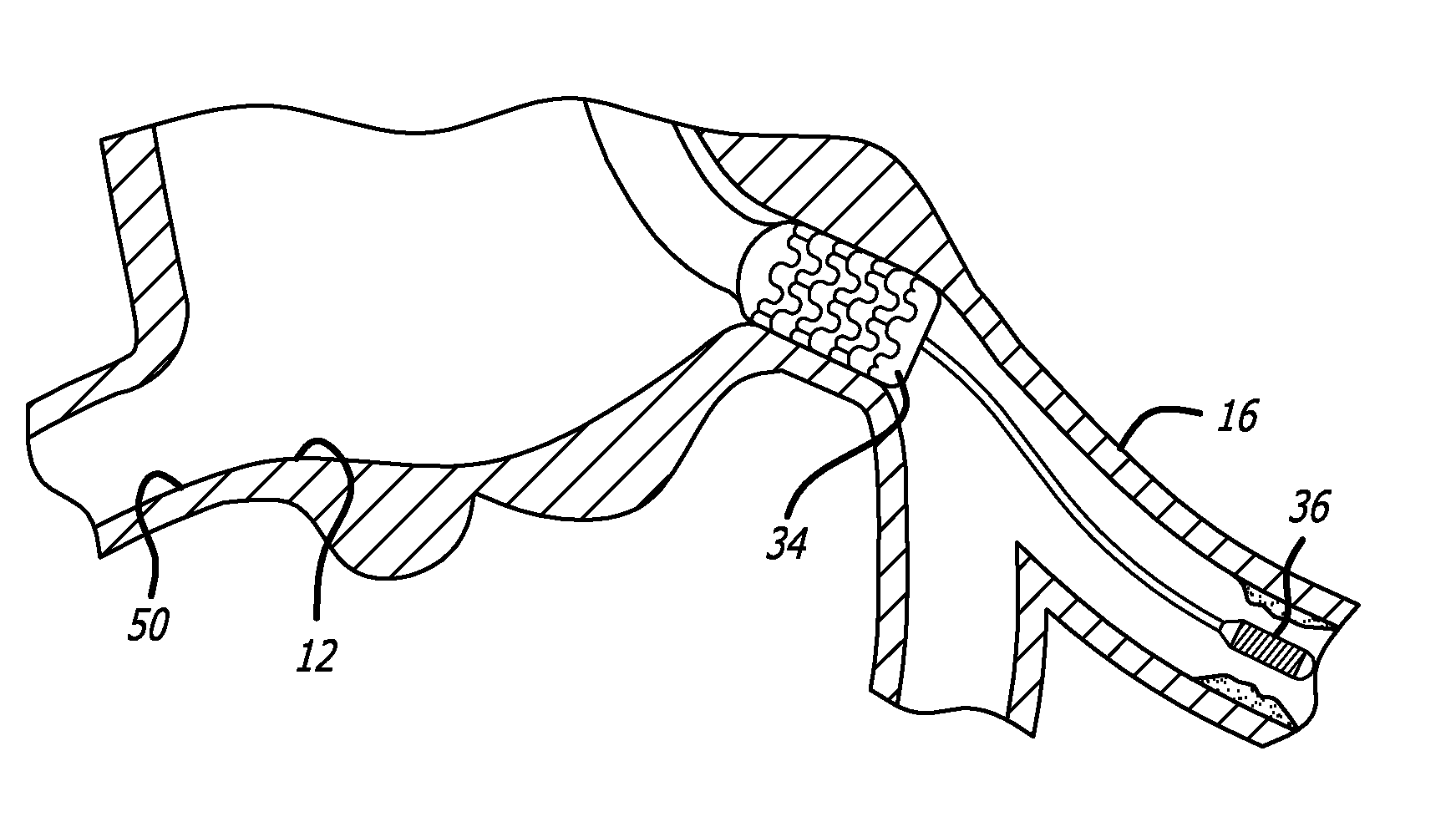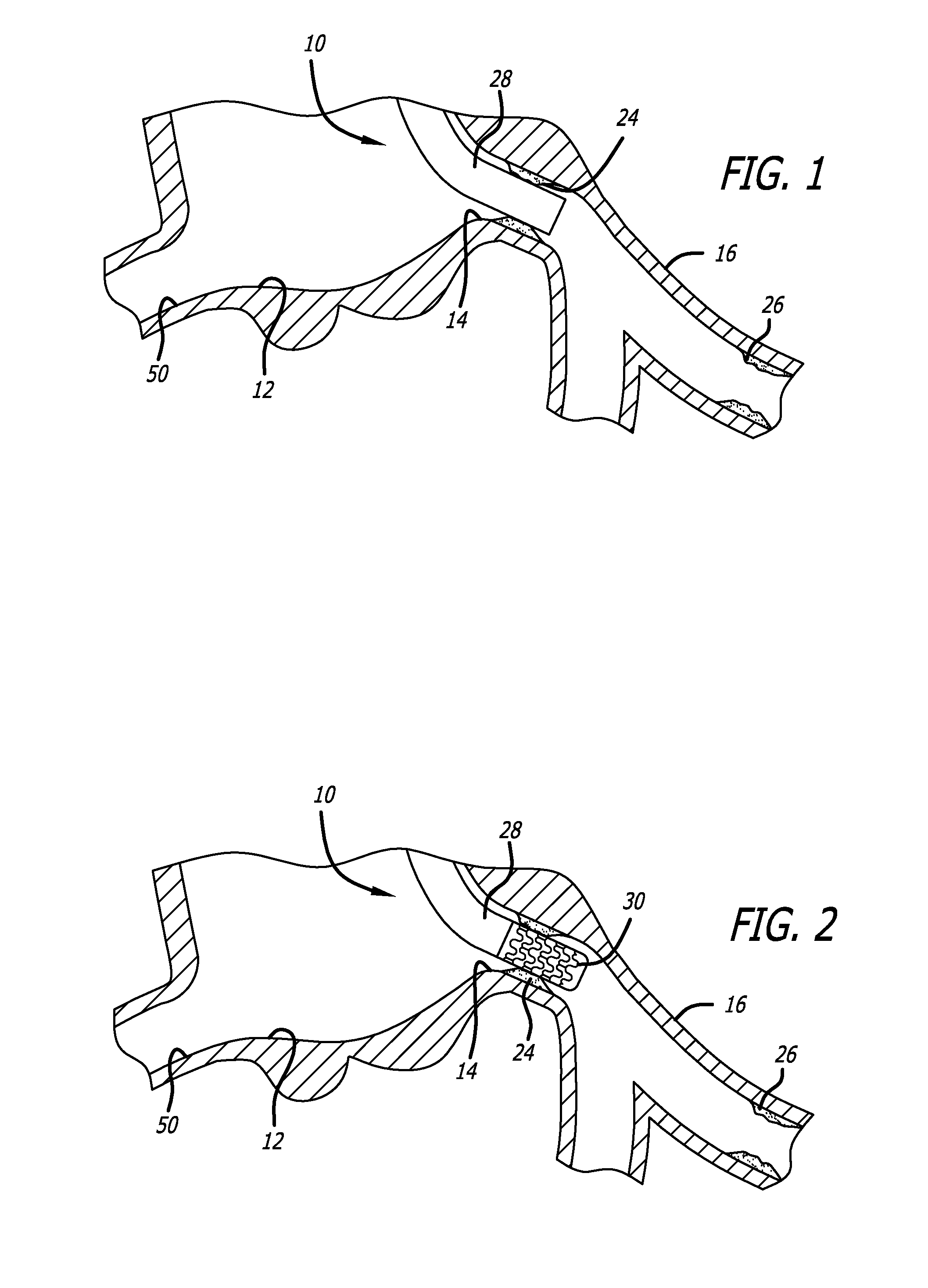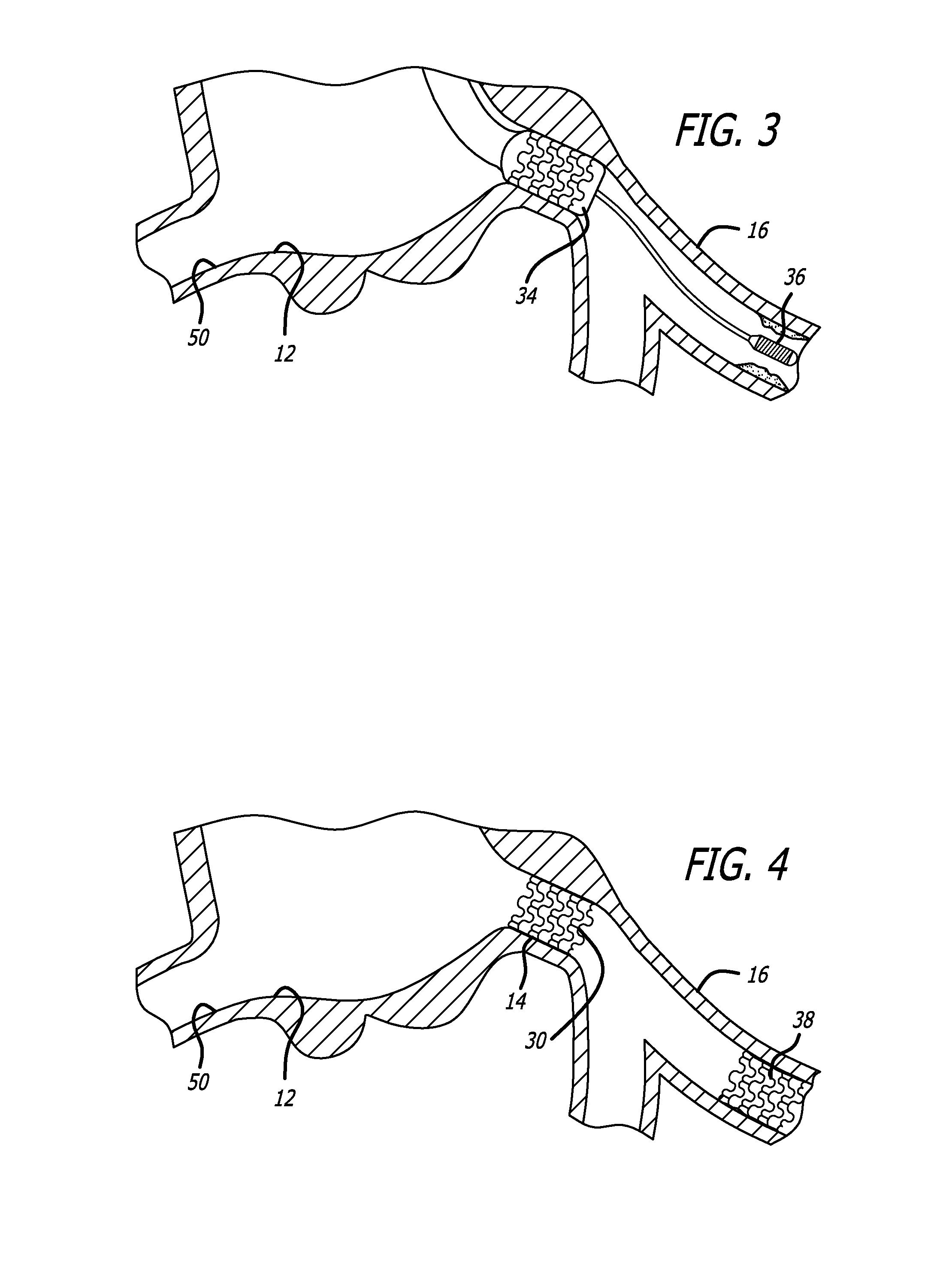[0007]The present invention is generally directed to methods for implanting a stent into an ostium or a proximal portion of a body vessel utilizing a guide catheter, rather than a conventional
balloon angioplasty catheter, as the primary delivery device. By using the guide catheter as the primary stent delivery catheter, the guide catheter can function both as a conventional guide catheter to allow interventional instruments to be advanced therethrough and as a stent delivery catheter to simultaneously
implant a stent in a location of the body vessel which is often difficult to
implant a stent with conventional stent delivery devices. The present invention is particularly useful in allowing a physician to accurately
implant a stent near the ostium of a main coronary artery branching from the
aorta, while still achieving adequate guide catheter support for advancement of
secondary treatment devices into the main coronary artery.
[0008]The methods of the present invention can utilize a guide catheter which includes a mounting region located at its distal end section upon which a stent can be mounted. Suitable stents which can be placed on the mounting region include, but are not limited to, balloon-expandable stents, self-expanding stent, bio-absorbable stents,
drug-eluting stents and composite stents. When a
balloon expandable stent is to be implanted, the guide catheter should include an expandable member, such as a balloon, which is adapted to apply an outward radial force which expands the stent into the body lumen. The guide catheter would require a mechanism, such as an inflation lumen and an inflation port, which would be used to inflate the balloon. When a self-expanding stent is to be implanted, usually a retractable sheath would be co-axially disposed over the guide catheter to maintain the self-expanding stent in a collapsed, delivery position. The retractable sheath could be simply retracted to remove the restraint placed on the self-expanding stent, thus allowing the self-expanding stent to radially expand to its expanded position. A retractable sheath also could be used to cover a balloon-expandable, bio-absorbable and
drug eluting stents to protect these stents as the guide catheter is being advanced into the patient's vasculature. As a result of using a protective outer sheath, there may be no need to
crimp the stent onto the guide catheter, which would be beneficial especially if the stent has a fragile structure or is coated with a
drug. The guide catheter can be made similar to conventional devices and include an elongated shaft with a preshaped or shapeable distal shaft section to facilitate placement of the distal tip of the guide catheter into a patient's body lumen.
[0010]In a further method of use, an interventional device can be advanced through the lumen of the guide catheter after the stent is implanted. As mentioned above, the guide catheter may include an expandable member upon which the stent is mounted. In using such a guide catheter, the method can include actuating the expandable member to implant the stent in the opening of the
branch vessel, which will also help in anchoring the distal section of the guide catheter within the
branch vessel. The expandable member can be, for example, an
inflatable stent balloon. After the expandable member has been actuated, an additional interventional procedure(s) can be performed on one or more stenoses, lesions or damaged vessel located distal to the ostium by simply using the guide catheter to advance the necessary interventional devices through the lumen of the guide catheter. As a result of this method, the physician does not have to utilize a conventional stent delivery catheter to stent the sometimes difficult to stent ostium of the
branch vessel.
[0011]As mentioned above, the stent can be covered during the time that the guide catheter is being advanced through the patient's vasculature. The method contemplates retracting the sheath in order to implant the stent. When the stent is a self-expanding type, the simple retraction of the sheath should allow the stent to self-expand to its expanded position. If the stent is a balloon expandable type, the sheath should first be retracted, otherwise the expansion of the balloon could cause the sheath to expand with the stent. Thereafter, the expandable member can be actuated to implant the stent at the area of
stenosis in the ostium of the
branch vessel. In one particular method of the present invention, the sheath can be made from a bio-absorbable material which starts to dissolve once making contact with the
body fluid. In such a method, the sheath does not have to be retracted since the sheath will dissolve in time to
expose the stent for implantation.
 Login to View More
Login to View More  Login to View More
Login to View More 


